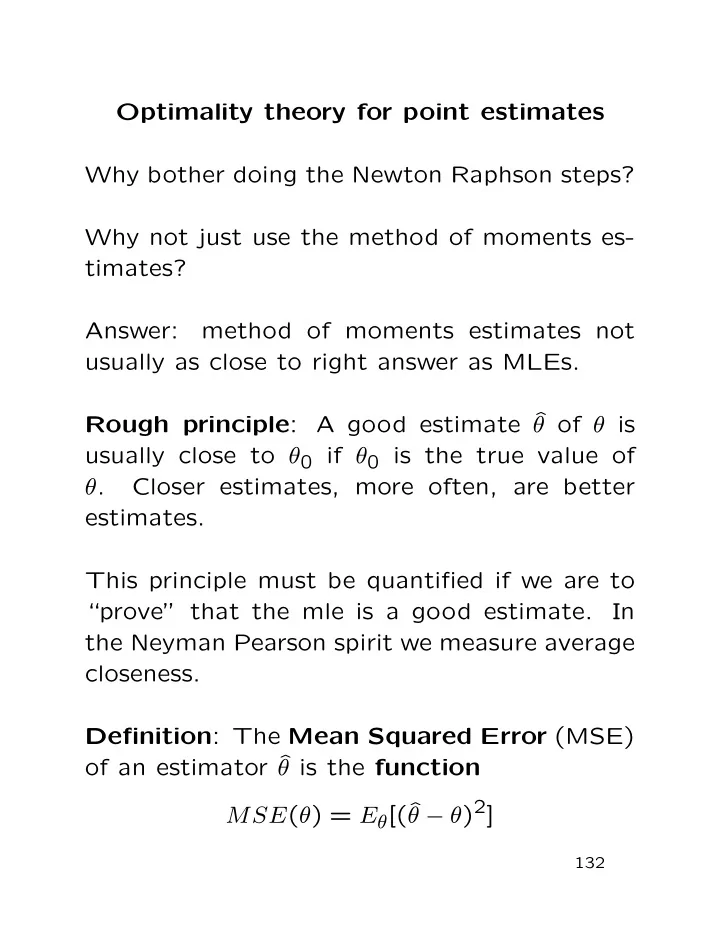

Optimality theory for point estimates Why bother doing the Newton Raphson steps? Why not just use the method of moments es- timates? Answer: method of moments estimates not usually as close to right answer as MLEs. Rough principle : A good estimate ˆ θ of θ is usually close to θ 0 if θ 0 is the true value of θ . Closer estimates, more often, are better estimates. This principle must be quantified if we are to “prove” that the mle is a good estimate. In the Neyman Pearson spirit we measure average closeness. Definition : The Mean Squared Error (MSE) of an estimator ˆ θ is the function θ − θ ) 2 ] MSE ( θ ) = E θ [(ˆ 132
Standard identity: θ ) + Bias 2 MSE = Var θ (ˆ θ ( θ ) ˆ where the bias is defined as θ ( θ ) = E θ (ˆ Bias ˆ θ ) − θ . Primitive example : I take a coin from my pocket and toss it 6 times. I get HTHTTT . The MLE of the probability of heads is p = X/n ˆ where X is the number of heads. In this case p = 1 I get ˆ 3 . 133
p = 1 Alternative estimate: ˜ 2 . That is, ˜ p ignores data; guess coin is fair. The MSEs of these two estimators are MSE MLE = p (1 − p ) 6 and MSE 0 . 5 = ( p − 0 . 5) 2 If 0 . 311 < p < 0 . 689 then 2nd MSE is smaller than first. For this reason I would recommend use of ˜ p for sample sizes this small. Same experiment with a thumbtack: tack can land point up (U) or tipped over (O). If I get UOUOOO how should I estimate p the probability of U ? Mathematics is identical to above but is ˜ p is better than ˆ p ? Less reason to believe 0 . 311 ≤ p ≤ 0 . 689 than with a coin. 134
Recommend
More recommend